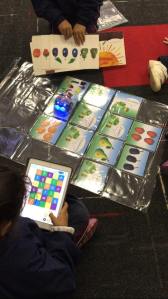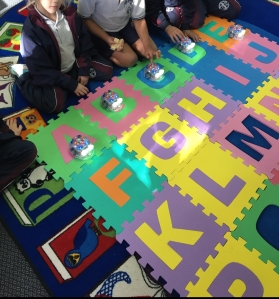The other day, I noticed that is was one of my ex-student’s birthdays – I’m friends with his mum on Facebook after their family moved away from the area and I left the school anyway.
This particular student has Asperger’s and really gave me a run for my money at times when I taught him in Year 2 in 2015. But my fondest moments throughout the year were those in which he shared his friendships with his toys with the rest of the class. I wrote about his friendship with his Zhu Zhu pet Zak here.
The other friend he had was a large stuffed dolphin that he named Lachlan, which he brought back to school from a family holiday to Queensland. Lachlan soon became part of our class – I had to include him on the daily roll when I called out everybody’s names, I had to tell Lachlan’s owner to block his ears when we were going to watch a video (as dolphins don’t like loud noises) and Lachlan even had his own Happiness Bucket. The other class members would say Good Morning to Lachlan and stood up for him fiercely when another student punched him in the nose. Lachlan liked doing Maths, which was helpful, as his owner sure didn’t, so it was awesome to have Lachlan sit next to him during Maths.
Each Friday, we had a type of Lower Primary Assembly, where a student from each class received the ‘Ice Cream Award’ – a free ice cream from a local shop. I liked to give this award to members of my class who had really excelled throughout the week, or showed one of our school values beyond the basics. As I worked my way through my class roll, I decided that Lachlan’s owner would be excited if Lachlan the dolphin received the Ice Cream Award. (I’m not entirely sure what reason I gave, possibly for helping his owner with his Maths work!)
My goodness, the cheer that erupted from the WHOLE class when Lachlan’s name was announced was incredible. The smile on his owner’s face was so big it almost didn’t fit on his head!
What I had forgotten – or to be more honest – not even realised, was the impact that this had on me, and this student.
I wrote a message for him on her wall for his 11th birthday and I was stoked to receive a message from his mum on Friday and it melted my heart. It included a photo of her son, cuddled up with Lachlan the dolphin in bed and it read:
“Hello Fiona, sorry for taking some time to send this! Still sleeping with Lachie. He also still talks about Lachie getting the ice cream award! Hope you’re well. xo”
*Just to note, I was NEVER allowed to call the dolphin Lachie like his mum can, I had to pronounce his name in full, Lachlan, every time!
It made me sit back and think…3 years ago this stuffed dolphin toy received an award, through no merit of his own. I didn’t have to give an award to a dolphin, but he had become such an important part of our class that it was hard to overlook him as an award recipient. But the student STILL talks about it.
Sometimes, we need to form relationships with students that we find find difficult, challenging, or downright stupid (talking to a stuffed dolphin every day, seriously?!). But they’re the things they remember. They still talk about it. They value those things.
So before you dismiss those ‘silly’ things, think about the impact it might have on your student…and yourself!








